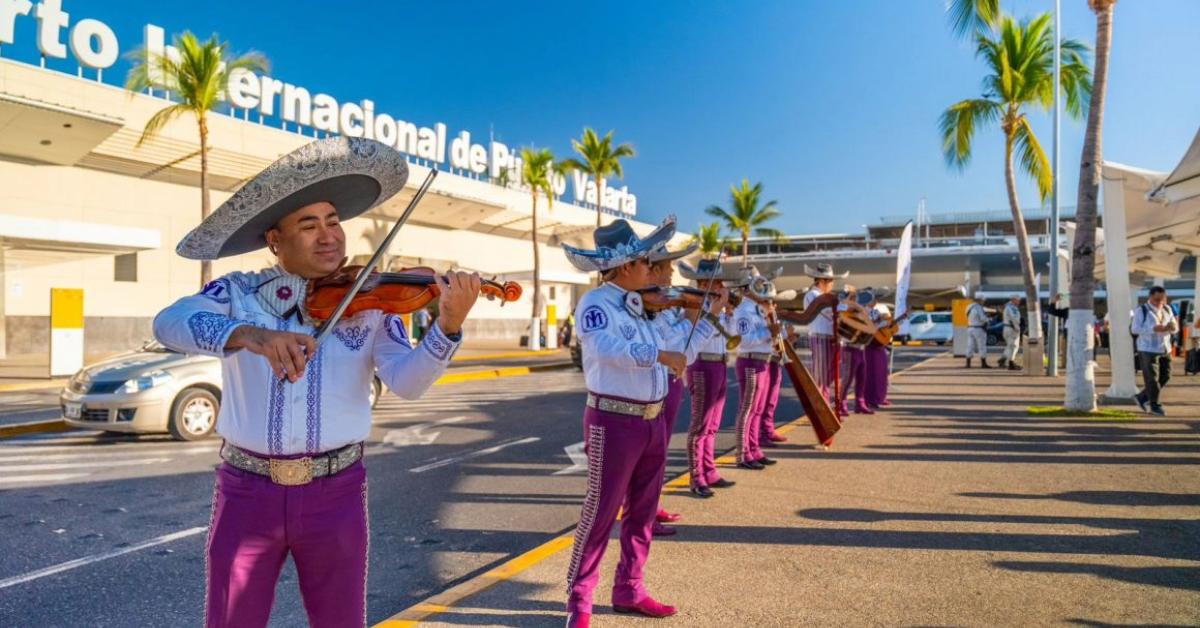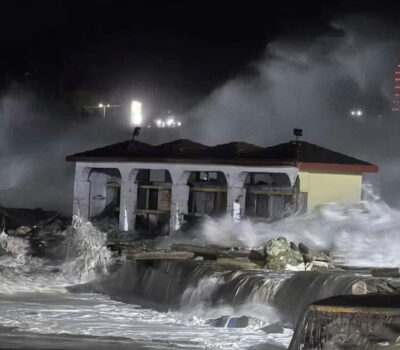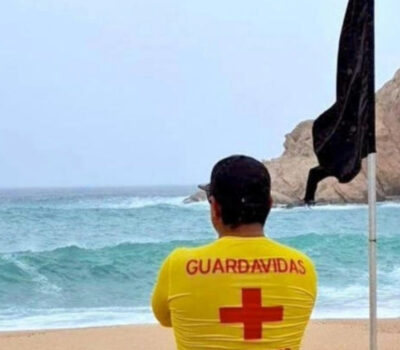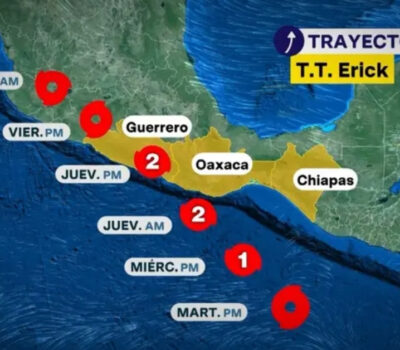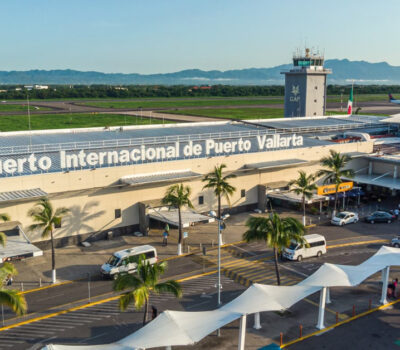Puerto Vallarta, Mexico – Puerto Vallarta, a coastal city once defined by its quiet fishing traditions, has evolved into one of Mexico’s most iconic tourism destinations. Set against the shimmering waters of Banderas Bay and framed by the lush Sierra Madre mountains, the city’s postcard-perfect landscape, world-class resorts, and bustling entertainment districts draw millions of international visitors each year. Yet, beneath the glittering exterior and steady influx of foreign investment, some observers argue that Puerto Vallarta’s rapid tourism development has sparked a complex debate over cultural authenticity, environmental sustainability, local well-being, and foreign influence.
While these discussions are not new, they have intensified over recent years as the city’s profile has grown. This controversy centers on fundamental questions: Has Puerto Vallarta truly benefited from its status as an international beach getaway, or has it become a commodified caricature of its former self, molded to satisfy external expectations at the cost of local priorities?
Critics of Puerto Vallarta’s tourism-driven identity often point to the dramatic changes that have transformed the city. What was once a modest town is now a sprawling coastal hub where elegant high-rise hotels, luxury condominiums, and lavish beach clubs line the shores. Some cultural observers assert that, in catering to tourists’ tastes, Puerto Vallarta’s authentic character has been overshadowed by a commercialized representation of “Mexican-ness.” Streets brimming with souvenir shops and restaurants advertising English-language menus, taco stands “toned down” to foreign palates, and entertainment offerings that borrow heavily from international standards rather than local traditions are singled out as evidence. In this view, Puerto Vallarta’s identity has been diluted: the city has become less a window into Mexico’s rich heritage and more a stage set to appease short-term visitors.
Supporters of Puerto Vallarta’s approach counter that tourism development has brought undeniable economic benefits to the region. They highlight job creation, improved infrastructure, and a steady revenue stream supporting public services. Local hospitality schools train future generations in culinary arts, hotel management, and tour operations, providing skills that are in high demand. Additionally, the city’s enhanced profile encourages cultural exchange, with travelers eager to learn about Mexican customs and history—even if these encounters sometimes happen through carefully curated experiences. Viewed from this perspective, Puerto Vallarta’s tourism sector has elevated the local economy, improved quality of life, and placed the city firmly on the global map, giving it a platform to share its story in ways that might otherwise have been impossible.
Yet, this economic prosperity comes with costs that increasingly shape discussions about the city’s future. Over the past decades, environmental concerns have climbed to the forefront. Puerto Vallarta’s location, once its greatest asset, is also its most delicate. The lush tropical forests and marine ecosystems that surround the bay are under pressure as development pushes closer to ecologically sensitive areas. Critics worry about habitat disruption, coral reef damage, water pollution, and overfishing, all potentially exacerbated by surging visitor numbers. Tour operators, developers, and government officials find themselves navigating difficult trade-offs: how to preserve these natural treasures while fueling economic growth. This tension is not unique to Puerto Vallarta, but as the city’s reputation continues to grow, it increasingly finds itself under a global spotlight.
Local communities often occupy the heart of this debate, raising questions about who truly benefits from Puerto Vallarta’s tourism industry. While it is true that hotels, restaurants, and tour companies generate employment, critics argue that much of the profit flows to large, often foreign-owned corporations. They highlight the rising cost of living, as foreign investors purchase and remodel properties, driving up real estate prices beyond the reach of many local residents. Gentrification—accelerated in part by an ever-expanding vacation rental market—can lead to the displacement of long-time families from neighborhoods they have called home for generations. This dynamic creates a sense of unease: even as the city’s star rises, some residents feel that they are losing their place within it.
Another layer of controversy emerges when considering cultural authenticity and how it is presented to visitors. Some commentators believe Puerto Vallarta’s tourism narrative relies too heavily on stereotypes and packaged experiences, inadvertently reinforcing a simplistic understanding of Mexican culture. Live mariachi performances, craft markets, and tequila-tasting tours are celebrated highlights for vacationers, but how faithfully do they represent local customs and everyday life? Are these experiences building cross-cultural understanding, or merely selling a polished fragment designed to appeal to the expectations of foreign guests? To skeptics, the branding of Puerto Vallarta as a picture-perfect paradise risks reducing a complex city to a series of well-rehearsed snapshots aligned with tourist fantasies rather than reality.
Proponents of the tourism model respond that such curated experiences are often stepping stones for cultural engagement. They argue that travelers who first encounter Mexico’s traditions through guided activities may return, deepen their understanding, and seek out more authentic cultural immersion on subsequent trips. They also note that local artisans, performers, and culinary experts do find opportunities to showcase their talents to a broad international audience. These moments of contact can, in theory, lead to a mutually beneficial exchange, spurring interest in regional crafts, music, and gastronomy that might otherwise struggle to find a global audience. The question, of course, is whether these exchanges go far enough in challenging superficial impressions and whether they contribute meaningfully to preserving and transmitting local heritage.
The role of government regulation and urban planning is frequently raised within this debate. Puerto Vallarta, like many coastal destinations, must strike a delicate balance between meeting the expectations of visitors and safeguarding the interests of its residents. Critics claim that the pace and scale of development have outstripped the city’s capacity to ensure sustainable growth. Infrastructure—such as water supply, transportation networks, and waste management—faces increasing strain, sometimes resulting in noticeable service disruptions. When cruise ships unload thousands of passengers into city streets, some say the infrastructure trembles under the weight of this pressure. Furthermore, environmentalists argue that stricter enforcement of existing regulations, coupled with the introduction of more robust conservation policies, would provide stronger safeguards against ecological damage.
Defenders of the city’s approach say Puerto Vallarta’s authorities are taking steps to address these challenges, pointing to sustainability certifications some resorts have earned and local campaigns that promote responsible tourism. They mention community clean-up initiatives, environmental education programs, and new guidelines aimed at controlling the expansion of beachfront structures. In this narrative, Puerto Vallarta’s leaders are not blind to the consequences of rapid growth; rather, they are engaged in an ongoing process of finding equilibrium, a process that naturally involves trial, error, and incremental improvement.
Another contentious dimension is the influence of foreign visitors and expatriate communities on Puerto Vallarta’s social fabric. The city is a favored destination for retirees and digital nomads from North America and other regions. While their presence injects capital into the local economy and fosters cultural exchange, critics argue that this trend also contributes to the rising cost of living and a shifting sense of identity. A community once defined by a distinct local rhythm is now intersected by varying cultural norms, languages, and lifestyles imported from abroad. Some locals voice concerns that what makes Puerto Vallarta uniquely Mexican may be fading under the weight of outside influences that have their own notions of convenience, comfort, and entertainment.
From another angle, supporters believe that foreign residents add valuable perspectives to Puerto Vallarta’s tapestry. They engage in community projects, support local businesses, and promote cultural understanding. Many invest time and resources into philanthropic endeavors—such as supporting local schools, environmental conservation efforts, and health initiatives—which might not receive the same level of attention without external advocacy. According to this viewpoint, foreign involvement is not a form of cultural erasure but rather a dynamic blend, a living experiment in multicultural coexistence that, over time, may enrich the city’s character rather than diminish it.
For travelers who come to Puerto Vallarta in search of a dream vacation, these debates may remain largely hidden. They see the city’s famous Malecón boardwalk, admire public art installations, dine at waterfront restaurants, and embark on day trips to scenic towns or tranquil coves. They might enjoy adventurous excursions—zip-lining through the jungle canopy, snorkeling in crystal-clear waters, or learning to prepare a traditional Mexican dish—without pausing to consider the complex interplay of economic forces, environmental challenges, cultural negotiations, and regulatory frameworks that make these experiences possible.
However, as Puerto Vallarta continues to capture the world’s attention, these underlying tensions may prove increasingly difficult to ignore. Global tourism markets are growing more aware of sustainability issues, and travelers themselves are becoming more discerning, curious about the authenticity of the places they visit. Whether this awareness will translate into meaningful changes depends on all stakeholders: city planners, hotel owners, local communities, environmental groups, and the travelers who choose Puerto Vallarta over countless other destinations. Each has a role in shaping a more balanced tourism model—one that respects the city’s ecological fragility, acknowledges local concerns, fosters genuine cultural understanding, and ensures that growth is not only profitable but equitable.
In the long run, the central controversy hovering over Puerto Vallarta may be distilled to a question of identity. As a city that has reinvented itself in the eyes of the world, where does Puerto Vallarta locate its true essence? Is it still the fishing village it once was, defined by traditions passed down through generations, or has it become something else entirely—a cosmopolitan hotspot that evolves in response to global trends? Perhaps the essence lies somewhere in between, a hybrid identity bridging local heritage and international appeal.
If Puerto Vallarta is to remain relevant and resilient, it may need to deepen the dialogue surrounding these controversies. Rather than presenting the tension as a binary choice between economic prosperity and cultural integrity—or between tourism growth and environmental protection—the city can explore frameworks that integrate these goals. Some tourism strategies include community-based initiatives, where local residents guide visitors through authentic cultural practices while ensuring that profits return to the community. Other models emphasize environmental stewardship, requiring tourism operators to adhere to strict conservation standards and contribute to restoration projects. Over time, these efforts can help transform controversy into consensus, or at least constructive negotiation.
In the end, Puerto Vallarta’s standing as a global destination does not have to mean sacrificing its character, environment, or the well-being of its people. Yet, doing so requires constant vigilance, frank conversation, and decisive action. It is this interplay of forces—economic ambition, cultural preservation, environmental care, and social responsibility—that makes Puerto Vallarta’s tourism story controversial in the eyes of many observers. Each year, as travelers flock to its shores, the city must ask itself who it is, who it serves, and how it will balance the often competing demands placed upon it.
Such questions do not yield simple answers. This is precisely why Puerto Vallarta remains a lightning rod for debate, a city caught between its alluring tropical image and the complex reality of what it means to be a modern, thriving destination. As the dialogue continues, one thing is certain: the future direction of Puerto Vallarta will shape not only its skyline and coastline but also the legacy it leaves for generations to come.
By Marisol Delgado
Disclaimer: The views, opinions, and positions expressed in this opinion piece are those of the author alone and do not necessarily reflect the official stance, policies, or positions of this publication or its editorial staff. While we strive to ensure accuracy and fairness, the responsibility for the content remains solely with the author. We encourage readers to consider multiple perspectives and form their own conclusions.
Puerto Vallarta, Mexico - Puerto Vallarta, a coastal city once defined by its quiet fishing traditions, has evolved into one of Mexico’s most iconic tourism destinations. Set against the shimmering waters of Banderas Bay and framed by the lush Sierra Madre mountains, the city’s postcard-perfect landscape, world-class resorts, and bustling entertainment districts draw millions of international visitors each year. Yet, beneath the glittering exterior and steady influx of foreign investment, some observers argue that Puerto Vallarta’s rapid tourism development has sparked a complex debate over cultural authenticity, environmental sustainability, local well-being, and foreign influence.

